Have you ever been interested in learning How to Grow Rosemary from Seed?
Are you unsure where to start though?
Or where to go for the best information?
I have created How to Grow Rosemary from Seed in 5 EASY Steps, so you can enjoy this herb all year long, no matter where you live.
And if you continue to scroll you will find Answers to 3 Frequently Asked Questions.
Choose These 4 Rosemary Types (Step #1)
In order to have the most success with the use of Rosemary, you have to identify the correct type to grow.
I am recommending four types of Rosemary when learning how to grow rosemary from seed.
These are the easiest rosemary to grow from seed and plant. Also, these five provide the most uses.
1. Creeping Rosemary
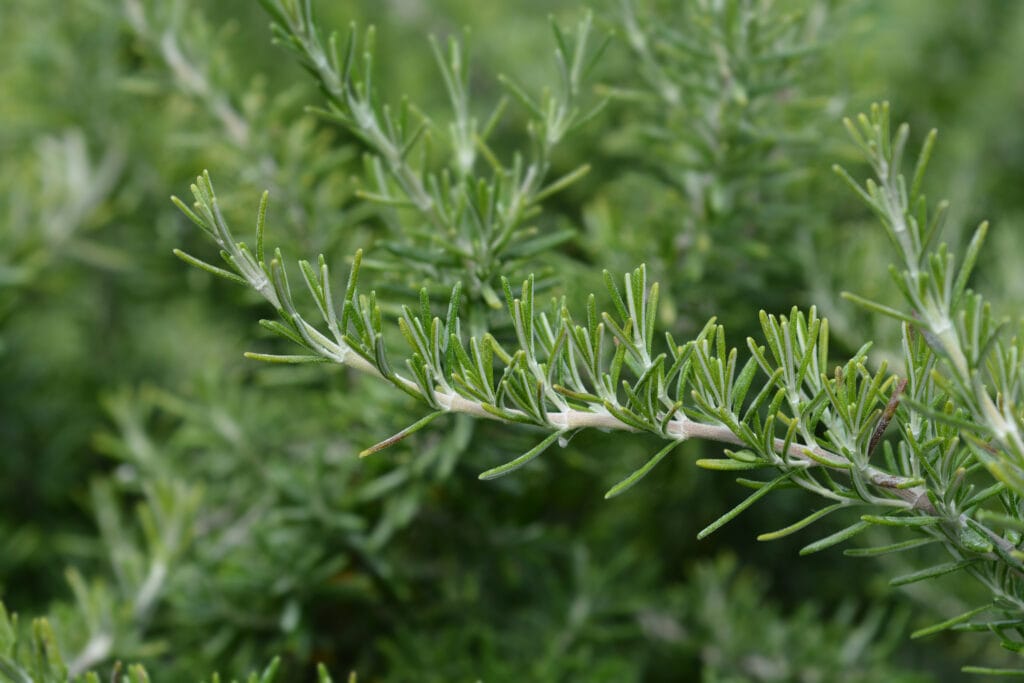
This type of Rosemary is low-growing Rosemary that is perfect to grow in containers, window boxes, as ground cover, and in raised garden beds.
Creeping Rosemary is perfect for hardy zones 7 to 11, is cold-hardy, and two of the most popular types of creeping rosemary is Prostratus and Hungtington Carpet.
Creeping rosemary can grow up to 8 feet wide and have beautiful blue blooms when flowering.
This type of Rosemary is known for its recognizable smell and is perfect for Mediterranean dishes.
2. Benenden Blue Rosemary
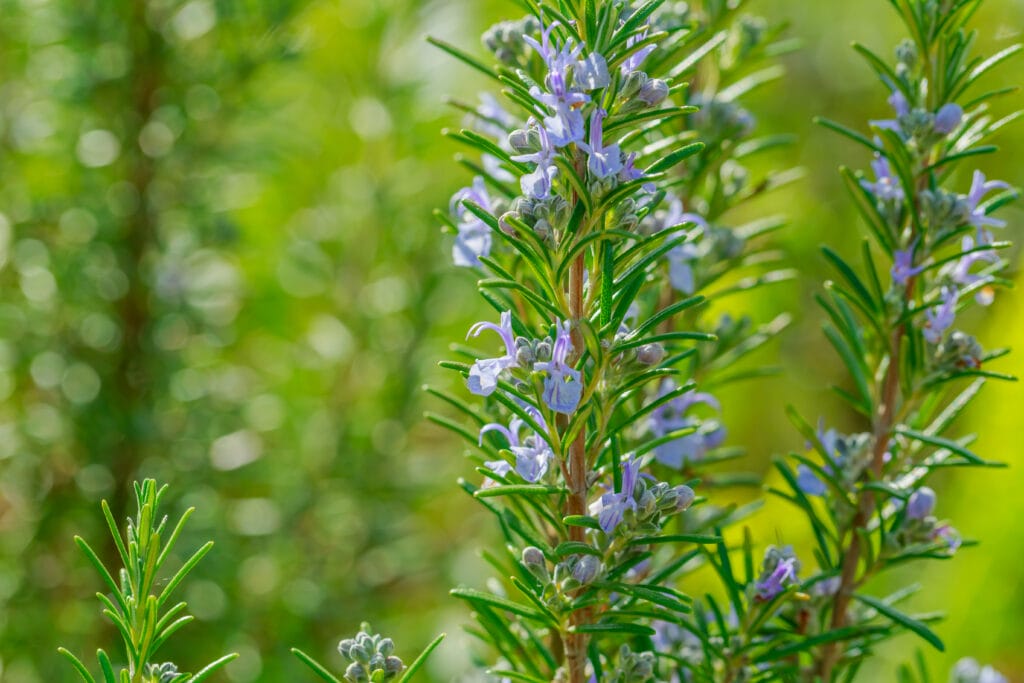
Benenden Blue Rosemary is known for its bright, blue blooms.
This type of Rosemary grows 3 feet tall and 4 feet wide and is perfect for sloped areas and drought-tolerant gardens.
Benenden Blue handles hardy zone as low as 6 and some of its famous types are Collingwood Igram and Ken Taylor.
And if you are looking for a herb that has strong pine fragrance and flavor then look no further!
3. Tuscan Blue Rosemary
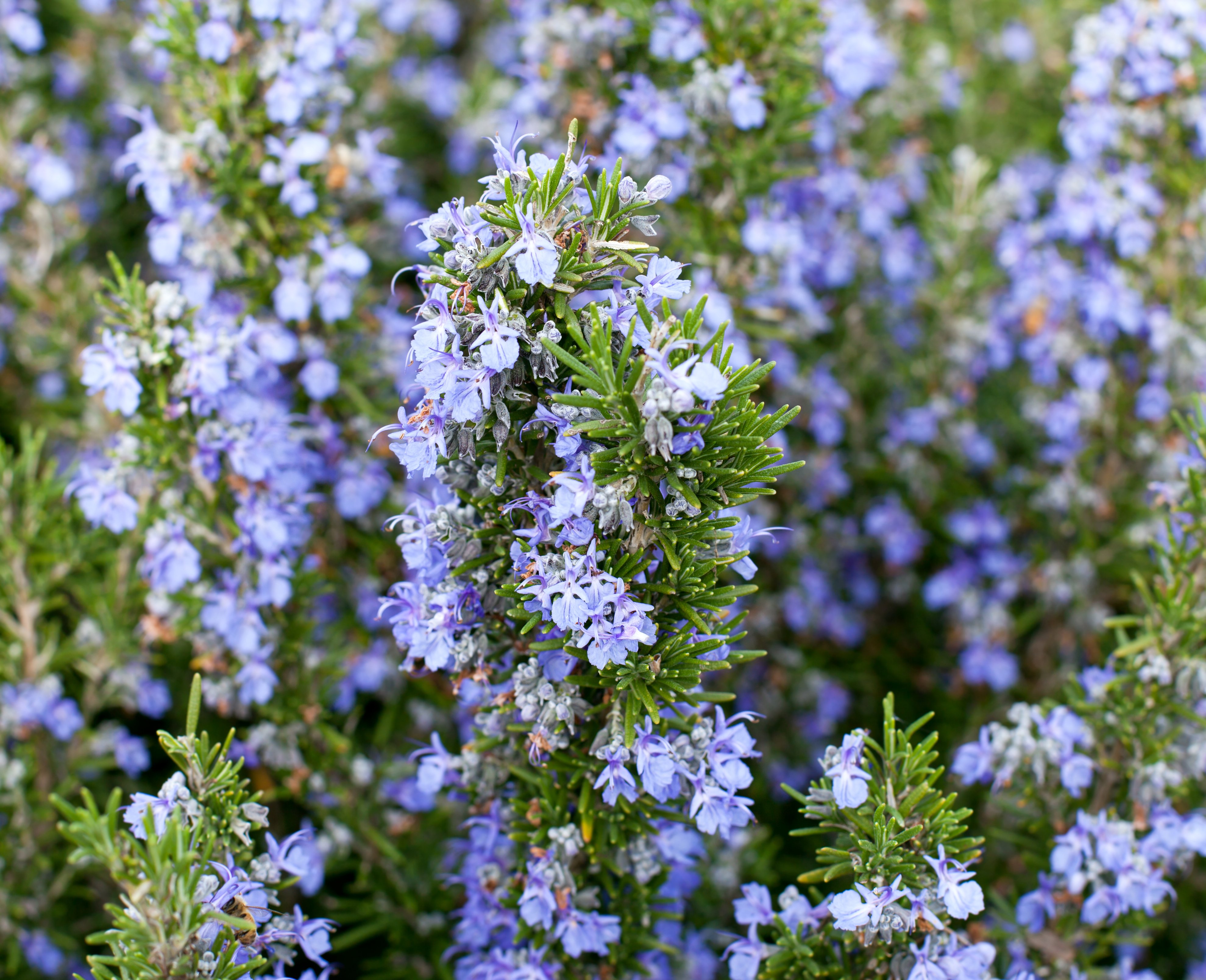
Tuscan Blue Rosemary is also known as “Tall Rosemary” because it is the highest growing Rosemary type growing up to 7 feet tall.
You can recognize Tuscan Blue Rosemary by its bright blue flowers and dark green and wide leaves. This is another type of Rosemary that grows to hardy zones of 7.
You want to plant this type of Rosemary if you have small spaces or want to contain your Rosemary in pots.
This is a carefree and hardy type of rosemary but is also a great addition to all types of dishes if you want a subtle, but unique flavor.
4. Arp Rosemary
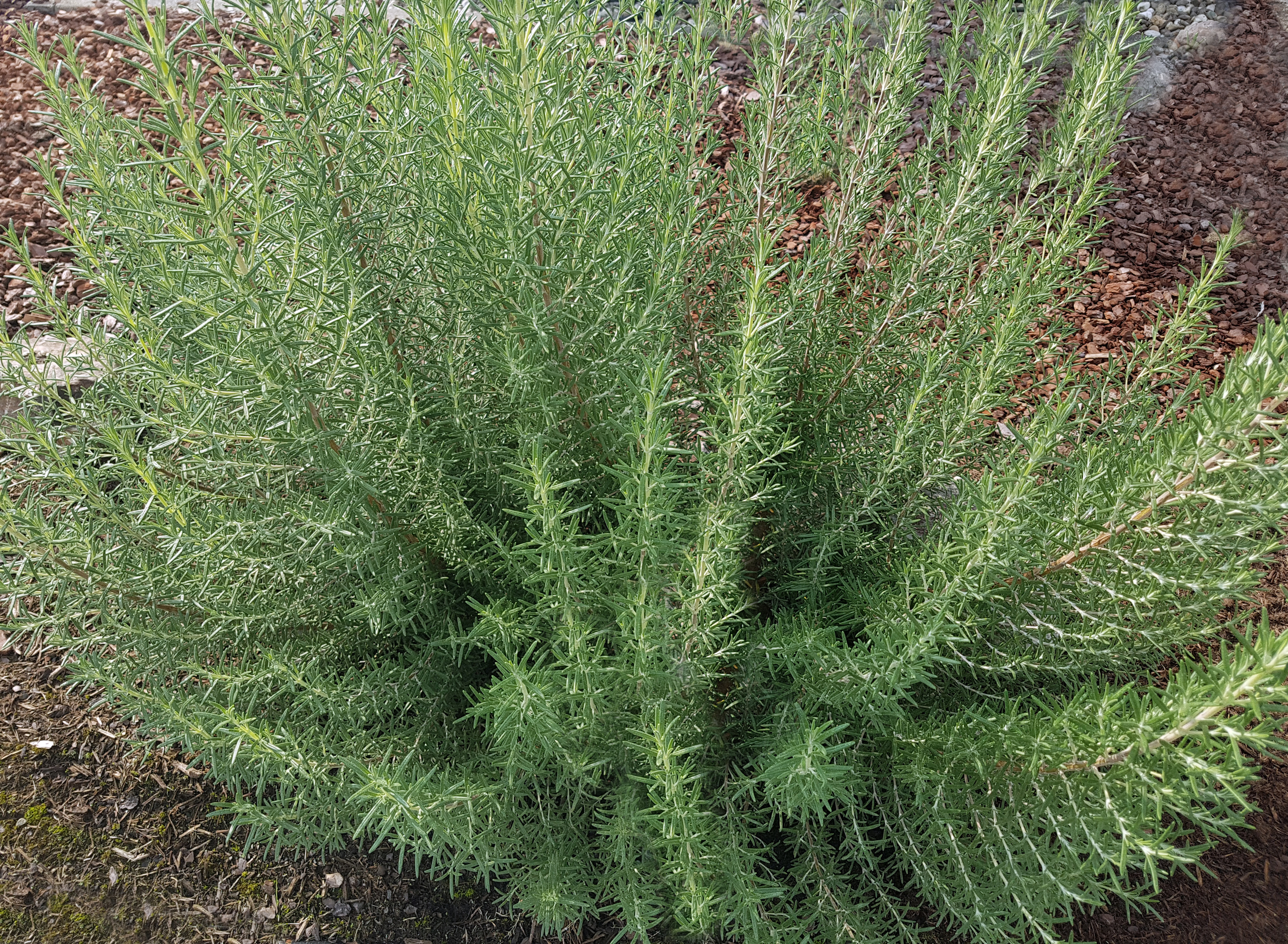
If you want to most cold-hardy rosemary then you should plant Arp Rosemary.
Arp Rosemary grows up to 5 feet tall, has light blue or almost white flowers, and can grow in hardy zones 6 with protection.
Some types of Arp Rosemary include Madeline Hill, Hill Hardy, and Herb Cottage.
This is another type of rosemary that has a pine needle aroma and flavor and like almost all types of rosemary can be added to many culinary dishes.
How to Start Rosemary Seeds (Step #2)

When learning how to grow Rosemary from seed you should always start your process indoors.
Part 1
You will want to start your rosemary seeds inside 12 weeks before you plan on moving your soon-to-be grown plant into your garden or larger container.
You want to first start by filling 3-inch pots approximately 80% full with seed-starting mix.
Next, you will want to spray the soil immediately after 5-10 times.
You want the soil to be damp, but not soaked. You will know the soil is damp when it turns a dark brown color.
Part 2
Next, form a tiny hole approximately 1/8 inch deep.
Then place 2 rosemary seeds into the hole and brush the soil over the seeds.
You will then spray the soil again 5 to 8 times. Moisten, but do not dampen the soil.
Part 3
After planting your rosemary seeds place your pots in direct sunlight or under your grow light. Your seeds will need approximately 8 hours of sunlight.
You will also need to make sure the room temperature is around 70 degrees Fahrenheit.
If the air temperature does not stay around this temperature then your seeds will not germinate or pop through the soil.
If you don’t have an area that will stay consistently around 70 degrees, I would recommend investing in a Plant Heating Mat.
Part 4
After your initial planting, you will need to spray the soil two to three times a day. Spray when the soil just becomes a light brown or slightly dry to the touch. Never let your seeds completely dry out.
It will take approximately 14 days for your rosemary seeds to germinate or pop through the soil. Depending on watering and temperature, your seed may germinate slightly quicker or slower than this.
Part 5
Continue spraying your rosemary seeds consistently for the next 8 weeks.
Once your rosemary reaches 4 inches tall you will want to move it to a larger container or outside.
If you move your rosemary plants into a larger container you can continue to water them twice a day until they are ready to be harvested.
You should only move your rosemary outside if the temperature is above freezing.
- Find your last frost date HERE.
Part 6
When transplanting your rosemary plant into a garden you will want to dig a hole that is the size of your rosemary plant root ball (where the roots meet the soil).
Next, cover it with soil and water it for 30 seconds.
It should also be noted that you will not need to thin your rosemary like other vegetables or herbs. Typically, 2 rosemary plants can grow in one pot without any problems. This will also give you the fullest harvest.
If you learn better watching a video then I recommend watching the below youtube tutorial:
How to Care for Rosemary (Step #3)
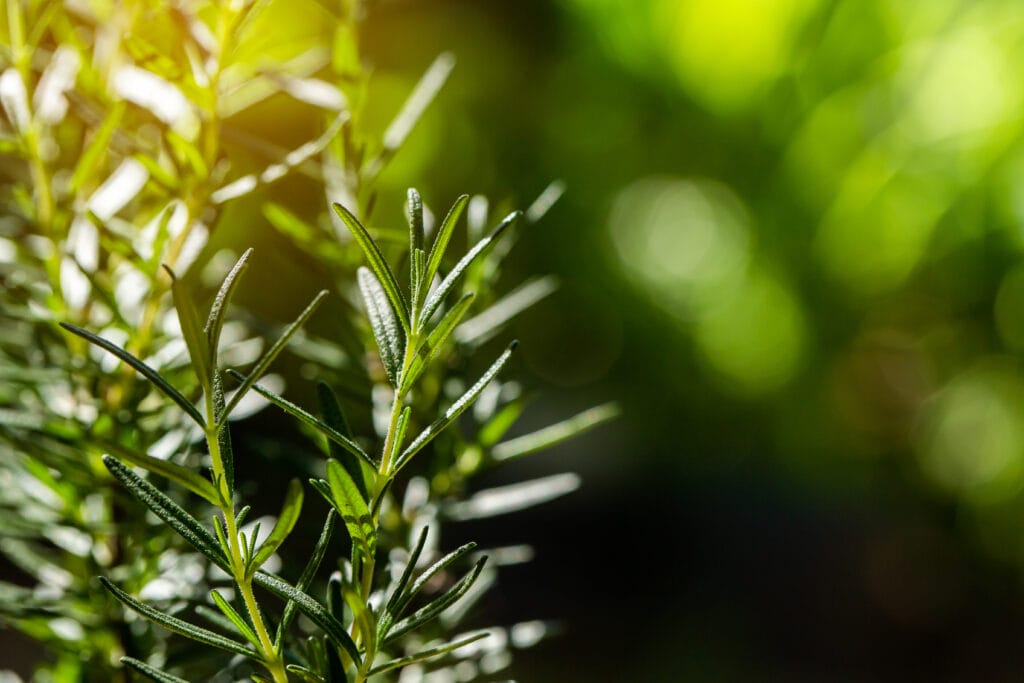
Below are tips for caring for your Rosemary throughout the summer:
- Healthy Soil & Fertilizer – Inspect your soil for fungus, pests, and weeds before you plant and throughout the summer. Remove as needed. Make sure your soil is well-draining and loamy.
- Insects. Aphids and Spider Mites are Rosemary’s enemies. They will destroy your rosemary plant very quickly!!! Contain and prevent this problem with Sevin Bug Killer.
- Water. Water once a week when planted outside. Rosemary plants prefer dry conditions to grow and bloom.
- Prune Often. Pruning will make your Rosemary a bushier plant. If you plan on using Rosemary to season food then pruning is the best way to get the most flavor out of your herb.
- Harvest Often & Early. One of the best ways to care for your rosemary is to harvest it often and early. This will help your rosemary to continue to grow and become healthier.
How to Harvest Rosemary (Step #4)
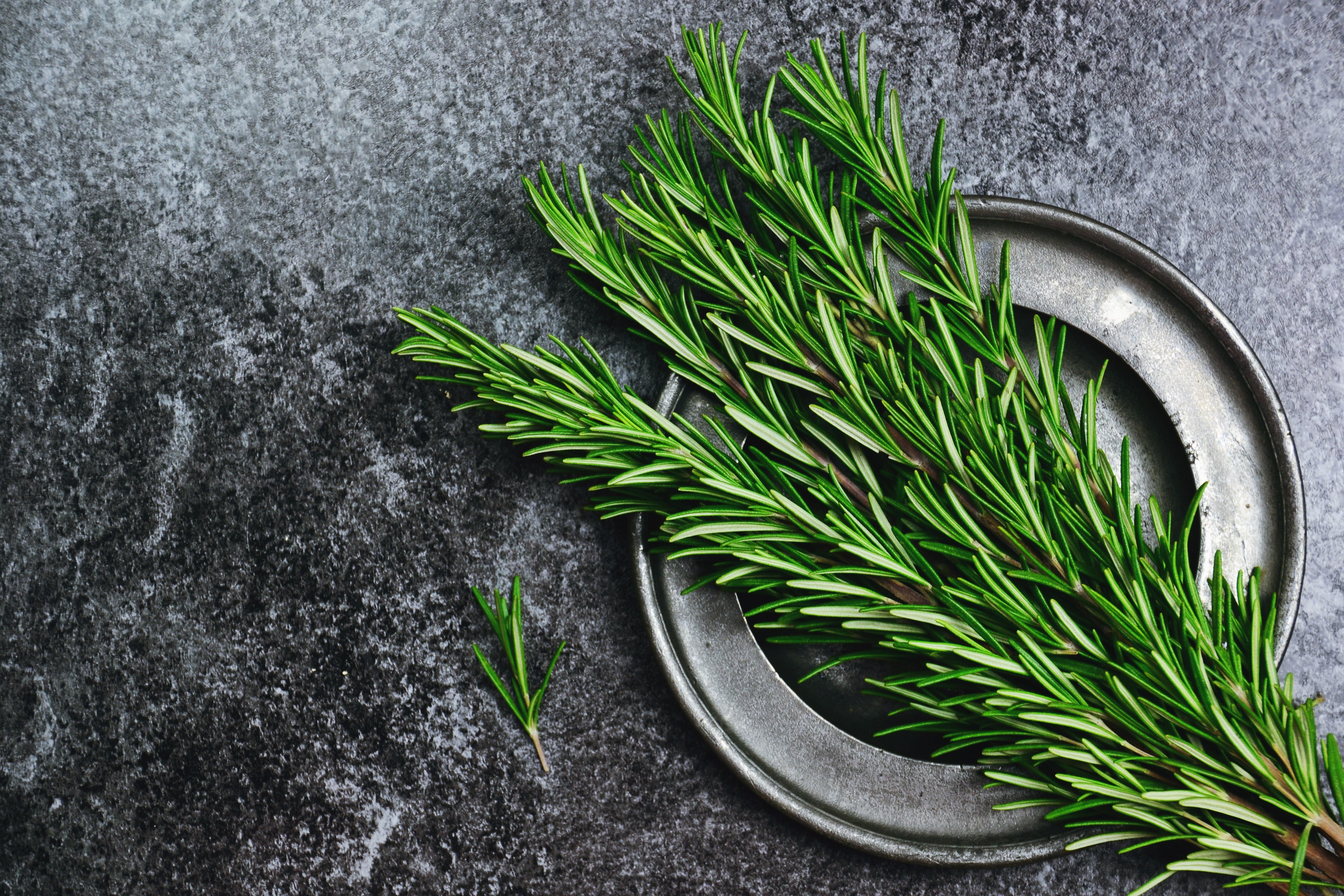
For every rosemary plant on this list, you can begin harvesting the leaves 60 to 90 days after your rosemary begins to grow through the soil.
Below are critical tips to remember when harvesting Rosemary:
- Harvest your Rosemary in late spring and early summer for the best flavor.
- If you are planning on drying Rosemary then harvest your herb when the bush begins to bloom.
- Cut off the top 2 inches of your rosemary plants.
- Harvest no more than 1/4 of your rosemary bush at a time.
How to Store Rosemary (Step #5)
- When using Rosemary immediately then wash the sprigs, pat it dry with a paper towel and use.
- If you plan on using Rosemary within a week then wash the spring, pat it dry, and then seal it in an airtight container and place it in a refrigerator for up to a week
- If you want to use Rosemary 6 months to 1 year after harvest then you can freeze the sprigs. You can either freeze Rosemary together in a freezer bag or you can freeze them in an air cube tray suspended in olive oil to preserve extra flavor.
- You can also dry your Rosemary if you would like to use it for over 1 year. All you need to do is place your herb on a baking sheet and place it in the oven on the lowest setting temperature. You can also use a dehydrator.
Frequently Asked Questions
#1. What are the Different Uses of Rosemary?
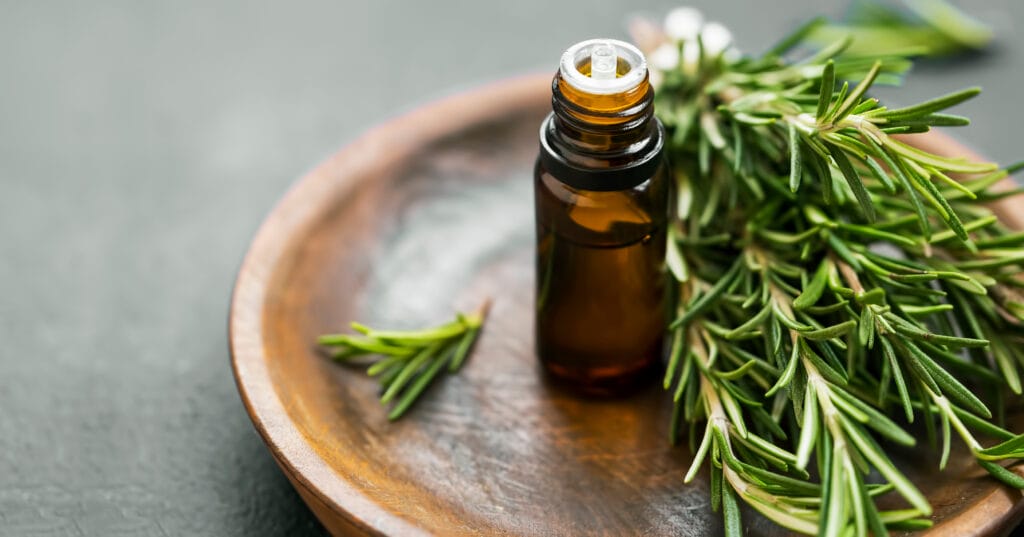
So planting, caring, and harvesting rosemary plants is fun, but using rosemary is why you plant!
Below, are a few of the uses of rosemary that are both easy and most enjoyable:
- Creating essential oil: Like other herbs, rosemary is great for creating essential oil that can be used to reduce stress, repel mosquitoes, and add fragrance to a room.
- Health: You can use Rosemary to help with baldness, to treat circulation problems, toothaches, gum disease, and even muscle aches.
- Food: There are so many dishes you can use Rosemary in, but if you want to learn my favorite ways to use rosemary then check out: AllRecipes
#2. Should I Propagate My Rosemary?
Propogating Rosemary is when you grow new Rosemary from cuttings from your existing Rosemary plant.
If you do not want to grow your rosemary from seed then buying an existing rosemary plant is the easiest way to garden.
But if you want to continue to expand your rosemary garden then propagating is a cheap, easy, and quick way to grow new rosemary plants.
To propagate begin by cutting 2-3 inches of soft, new growth.
Then remove the leaves on the bottom of rosemary and dip it in rooting hormone
Finally, take the dip end and place it into a seed starting mix. Follow the same steps from here out as would if you were starting rosemary seed.
In 2 to 3 weeks test the root growth by gently tugging on the cutting. If the root growth has held then pinch off the very top to encourage the development of branches.
#3. What Tools Are Needed for Planting Rosemary?
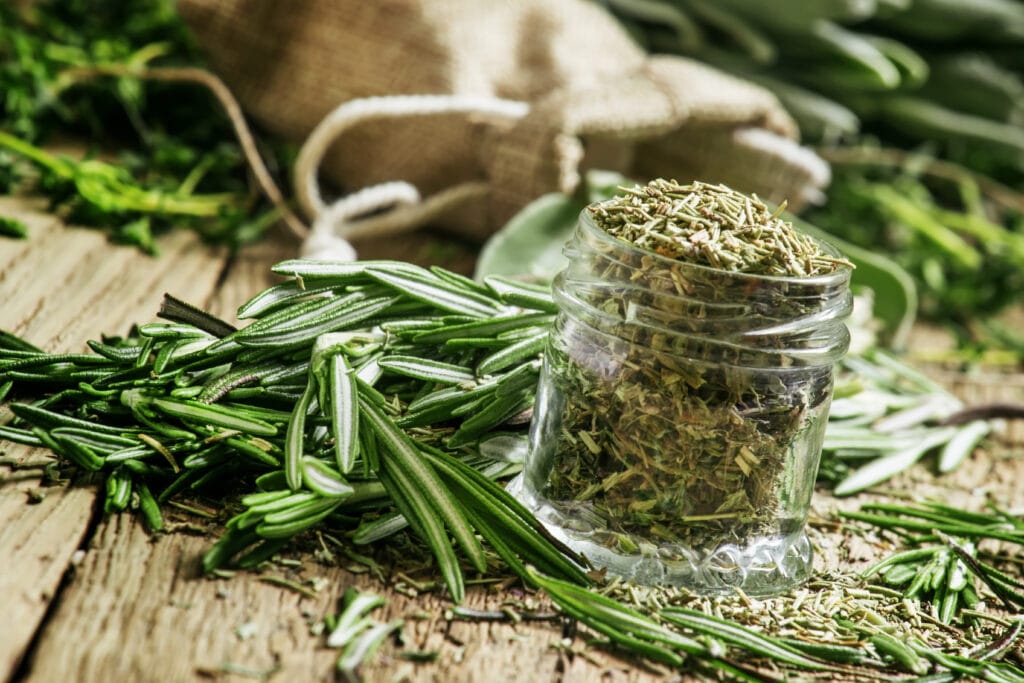
Below, is a list of the recommended supplies and tools needed to give your rosemary the best chance to grow and thrive:
1. Rosemary Seeds
Rosemary plants typically grow from your traditional seed or organic.
Whether you purchase organic seeds or traditional seeds you will have the same results. There is no benefit to your health and your harvest will be no different.
What is important is where you purchase your rosemary seeds from.
If you want seeds that come from reputable companies at a reasonable price and with quick delivery then you want to purchase them from Amazon.
2. 2 Types of Containers
I recommend starting off your seed in 3-inch pots. My suggestion is GrowKo Peat Pots.
Next, you’ll want a much larger pot if you do not plan on transplanting your rosemary into a garden.
The reason for this is that 3 inch pots are great for seeds and starting small plants, but cannot sustain the root growth needed for rosemary leaf growth.
I recommend: Viagrow 5 Gallon Nursery Pot
3. Garden Tool Set
It is great to have good garden tools to help minimize dirt and disorganization.
Sometimes though buying them separately can be expensive and time-consuming.
Because of this, I recommend buying a toolset like Vremi 9 piece tool set
4. Grow Light
If you can’t grow rosemary seeds inside without a good grow light. If you have access to a warm sunny area for at least 8 hours a day you won’t need a grow light.
Most of us don’t have access to that much sunlight during the winter. And sometimes even if we do a grow light is just more effective for the best results.
I specifically recommend: Hydrofarm Grow Light
5. Good Soil & Fertilizer
If you do not have the proper soil your seed will not fully grow and bare leaves. And while you can survive without fertilizer, a good mixture will help you get the most out of your rosemary plant.
While there are lots of soil you can buy, we will want to focus on the only one you need, potting mix.
Very simply, this soil will contain the right mixture of soil, sand, and nutrients needed for your seeds to grow healthy.
I am highly recommending: Miracle-Gro Potting Mix.
It has everything you need to start seeds and provide your rosemary with the correct nutrients that can be found in this soil.
And if you decide you want to transplant your plant to another pot you will not need to purchase a different type of soil.
In addition, you want to make sure you have a good fertilizer to help your herb grow as large and fruitful as possible.
I use and recommend: Miracle-Gro Plant Food
Why I like this type of fertilizer is that it provides everything your rosemary plant needs. And you won’t have to worry about the type of mixture to use or how to use it.
Best of all is that this type of fertilizer can be used on all your vegetable and herb plants!
Conclusion
After reading this article you should now have a much better idea on How to Grow Rosemary from seeds and how to have the greatest chance for success.
If you want to have the most success, I recommend these 5 Easy Steps:
- Use one of the 4 recommended types of Rosemary for the best chance of success
- Start your seeds indoors 12 weeks before your last frost to ensure the best success
- Rosemary does not require a lot of maintenance, but make sure you prune often to encourage fragrant and flavorful leaves.
- It is easy to harvest Rosemary. Just make sure you do not cut more than 1/4 of the bush at a time
- You can store your rosemary in the fridge, freezer, or even dried! This allows you to enjoy it all year!
If you enjoyed this article then please read my other articles:



